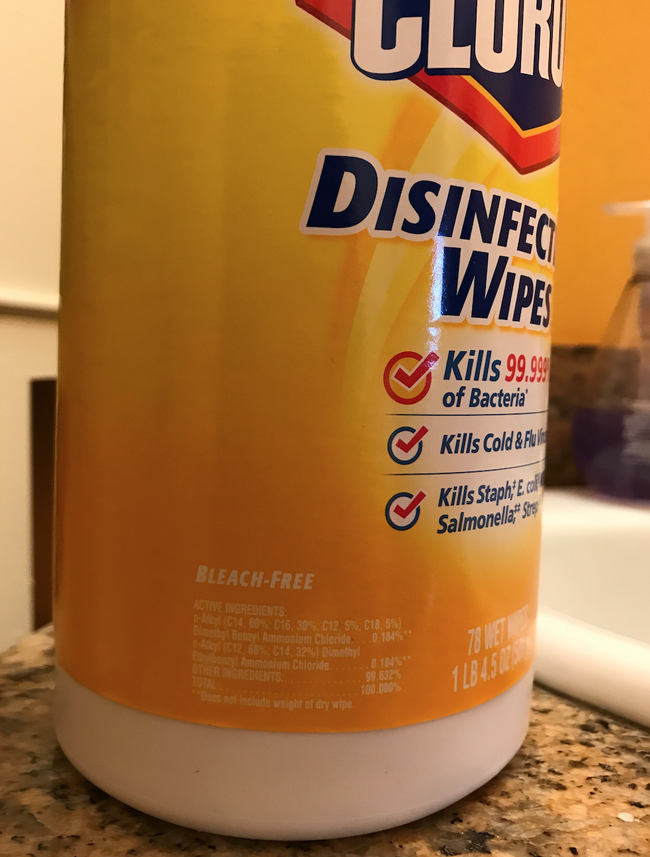In order to stay healthy and keep our spaces clean during the COVID-19 pandemic, many people are using disinfectants and sanitizers more than they may have before. The Centers for Disease Control say to limit the spread of the COVID-19 virus, people should wash hands often with soap and water, and for surfaces, clean first with soap and water then disinfect. When used according to label directions, this will reduce the virus particles present that could infect people.
Disinfectants are pesticides
Disinfectants are designed to kill germs, including viruses, on surfaces and are designated by law to be pesticides. These antimicrobial pesticides are vital to prevent the spread of germs that cause diseases, including COVID-19. Disinfectants, like any other pesticide, must be used carefully to avoid personal injury during exposure and for them to work as intended.
Always read the label and follow the directions carefully. Many people neglect to leave a disinfectant wet on the surface for long enough to properly disinfect (the contact time) or may not rinse the surface after disinfection when required. For more information, see the blog post on this topic.
Hand sanitizers vs surface sanitizers

Surface sanitizers are registered for use on hard surfaces and are considered pesticides. They should only be used on surfaces, not on your skin. Disinfecting wipes labeled for use on surfaces are not the same as cleansing wipes, such as baby wipes, intended for use on the skin.
If you're unsure about the product and its intended uses, check the label or packaging. See our blog post on reading pesticide labels.
Protect yourself
You may have heard a lot about “PPE” or personal protective equipment recently. Medical professionals use PPE to protect themselves and others from spreading the COVID-19 virus and other germs, but did you know PPE is also listed on a pesticide label? Wearing PPE when applying pesticides helps to prevent or limit exposure to the chemicals in the pesticide product. For more information about what to wear when using pesticides, see this blog post.
Health risks
There are health risks from using disinfectants and sanitizers improperly. With the recent nationwide increase in disinfectant use, poison centers have seen a surge in people becoming ill from exposure to disinfectants. When using a surface disinfectant like bleach, remember that you must never apply it to yourself or others. Do not ingest disinfectant products; this includes spraying the product directly on food.
Take care not to inhale fumes from a disinfectant product as you use it to disinfect surfaces. As with any pesticide, wash your hands after using sanitizer and disinfectant products.
See the fact sheet from the American Association of Poison Control Centers for more information.
Author - Associate Director for Urban & Community IPM/ Area Urban IPM Advisor